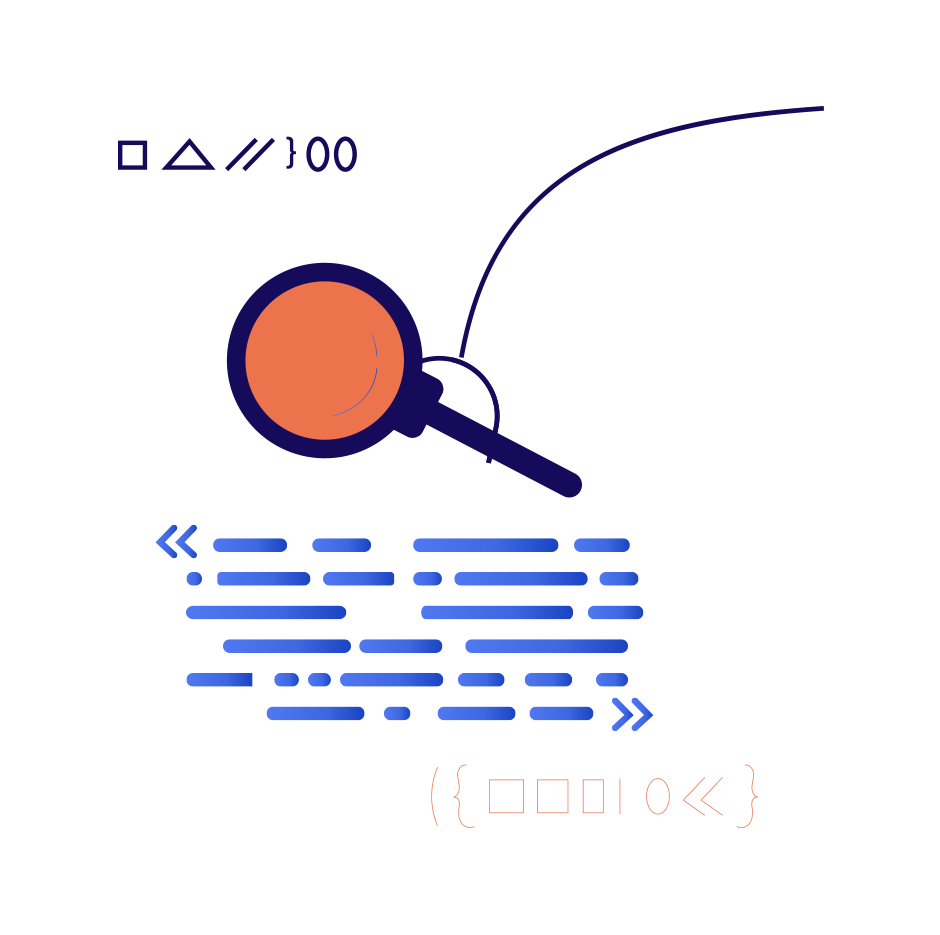In the ever-evolving realm of e-commerce, the user experience plays a pivotal role in attracting and retaining customers. With Magento’s versatile platform, mastering the art of theme development is the key to creating a truly unique and tailored online store. In this article, we will guide you through the process of crafting custom Magento themes, from fundamental concepts to advanced techniques.
Whether you’re a seasoned developer looking to expand your skill set or a newcomer eager to dive into the world of e-commerce, by the end of this series, you’ll be equipped to deliver exceptional shopping experiences and unlock the full potential of Magento theme customization.
Join us on this journey where creativity and technology unite to shape the future of e-commerce.
Understanding Magento Theme Structure

Overview of Magento’s Theme Directory Structure
The primary location for themes is the app/design/frontend directory. Here, themes are organized into vendor-specific folders, which further contain your specific theme folders. These themes can be installed and customized, making it easy to switch between themes or create custom ones to suit your brand’s unique identity. Understanding this directory structure is fundamental to managing and customizing themes effectively.
Moreover, within these theme directories, you’ll find a set of essential files and directories, including layout XML files, templates, JavaScript, CSS, and more. These files collectively define how your app design frontend store looks and behaves, and by delving into this structure, you gain the power to finely tune every aspect of your app design frontend storefront’s appearance and functionality.
Explanation of the Hierarchy of Theme Files
Magento’s theme hierarchy is the backbone of how themes are applied and prioritized within your store. It’s essential to grasp this hierarchy to ensure that your customizations and design choices are implemented as intended.
At the top of the hierarchy is the ‘default’ theme, which acts as a fallback theme and save settings, providing a base appearance if no specific theme is selected.
Next in the hierarchy is the ‘parent theme,’ which can be used as a foundation for your custom theme, inheriting its design elements and styles.
Finally, the ‘custom’ theme folder’ is at the bottom of the hierarchy, where you can make specific customizations, such as modifying templates, styles, or layout.
Getting Started with Magento Theme Development

Installing Magento and Setting Up a Development Environment
Before you dive headfirst into Magento theme development, it’s essential to establish a solid foundation by setting up a proper development environment. The initial step involves installing Magento on your local machine or a dedicated development server.
You can opt for the open-source version, Magento Community Edition, or the enterprise-grade Magento Commerce.
Magento offers straightforward installation options, including the Composer package manager, which simplifies the process and manages dependencies efficiently.
Once Magento 2 theme development itself is up and running, you can configure your development environment with the necessary tools such as a code editor, version control system, and debugging tools.
This environment provides you with a safe space to experiment with themes, customize code, and test changes without impacting your live online store.
Overview of Magento’s Default Theme and Its Components
Understanding Magento’s default theme, which is typically named ‘Luma’ in recent versions, is a crucial first step in Magento theme development. The default theme serves as a foundational reference point, demonstrating Magento’s best practices and design standards.
It includes various components like generic layout files, XML files, templates, JavaScript, and CSS files. By dissecting Luma, you gain insights into how Magento structures its themes, how different elements are organized, and how they interact with one another.
This knowledge provides a solid framework for building your custom themes, allowing you to extend or override Luma’s components to create a unique and visually appealing storefront.
Familiarizing yourself with Luma’s structure is the springboard for crafting custom themes that align with Magento’s core principles while reflecting your brand’s individuality and user experience goals.
Customizing Magento Themes

Modifying Layout Files to Rearrange and Customize Page Elements
Modifying layout files is a fundamental aspect of customizing Magento themes. Layout files in Magento follow the same XML file format and control the structure of pages. By editing or creating new layout XML files, you can rearrange page elements, add new blocks, and customize the overall page structure.
This allows you to tailor the content and appearance of your store pages to meet your specific requirements.
Whether you need to reposition product listings, add promotional banners, or include additional content blocks, working with layout files empowers you to reshape the user experience according to your brand’s vision.
Customizing Magento’s Default Design Elements such as Buttons, Fonts, and Colors
To create a truly unique storefront, it’s essential to customize design elements such as buttons, fonts, and colors. Magento makes this process highly accessible through the use of CSS and Less.
You can adjust the look and feel of your store by overriding CSS files and customizing variables in Less template files below.
This flexibility lets you change the color scheme to match your brand, tweak button styles to align with your design preferences, and select fonts that convey the right tone for your online store.
These customizations play a significant role in ensuring a cohesive and visually appealing, theme layout that resonates with your target audience.
Integrating Custom CSS and JavaScript to Enhance the Theme’s Functionality
Adding custom CSS and JavaScript is the key to enhancing your Magento theme’s functionality. By injecting your own code, you can implement unique features, animations, and interactions to make your online store stand out.
Custom JavaScript can be used for dynamic elements, from creating interactive product displays to implementing advanced search and navigation options.
Simultaneously, custom CSS allows you to fine-tune the theme’s responsiveness, optimize layout for different devices, and add visual effects to engage visitors. The ability to integrate these customizations gives you the creative freedom to elevate the user experience and tailor your Magento theme to your specific business needs.
Advanced Magento Theme Development Techniques
Creating Custom Theme Templates to Override Default Magento Templates

In advanced Magento theme development, the ability to create custom theme layouts and templates is a game-changer. Magento employs a robust templating system, and by crafting your templates, you can completely override default Magento templates, allowing you to control the structure and appearance of your online store.
This means you can design product pages, category listings, and any other storefront elements to perfectly match your brand’s identity and customer experience goals.
Custom templates provide the ultimate level of flexibility, letting you take full control over how content is presented to your audience, ensuring a seamless blend of aesthetics and functionality.
Utilizing Magento’s Theme Fallback Mechanism to Extend Themes

Magento’s theme fallback mechanism is a powerful tool for advanced theme development. It allows you to create themes that inherit from other themes, making it easier to extend and modify existing designs. This mechanism is especially useful when you want to make incremental changes or enhancements to a pre-existing theme.
By inheriting from a parent theme, you can override only the specific files or components you need to configure custom theme, reducing development effort and ensuring smoother theme updates.
This approach ensures that your customizations coexist seamlessly with core and third-party themes, simplifying the maintenance of your theme in Magento store.
Understanding Magento’s XML Layout System for Advanced Customization

To reach the pinnacle of Magento theme development, a deep understanding of the XML layout system is essential. Magento’s layout XML files are at the heart of how pages are structured, and mastering this system allows for advanced customizations.
With extending layout file XML, you can dynamically manipulate page elements, configure block positioning, and even create entirely new page layouts. It provides fine-grained control over your storefront’s structure and content.
Advanced developers use this system to build complex, custom page layouts, implement conditional logic, and dynamically control content rendering, enabling highly personalized and responsive user experiences.
Understanding and harnessing the full potential of Magento’s XML layout file system opens doors to limitless customization possibilities.
Optimizing Magento Themes for Performance
Optimizing Images and Code for Faster Page Load Times

One of the most critical aspects of optimizing Magento themes for peak performance is the efficient management of images and code. Images are often the heaviest elements on web pages, and optimizing them for web use is essential. Using the right image formats, compressing images without sacrificing quality, and serving appropriately sized images based on the user’s device are fundamental steps.
Additionally, optimizing code by reducing unnecessary or redundant scripts, using asynchronous loading for non-essential assets, and ensuring proper code structure can significantly improve page load times.
These optimizations lead to a faster and smoother user experience, reducing bounce rates and boosting your SEO ranking.
Implementing Caching Techniques to Improve Website Performance

Caching is a tried-and-true technique to enhance website performance, and Magento offers various caching options. Full-page caching, block caching, and other cache types can significantly reduce server load and load times for returning visitors.
When a page is cached, it’s stored in its complete, rendered form, ready to be delivered quickly to the user.
In combination with other techniques like browser caching and content delivery networks (CDNs), caching can dramatically reduce the load on your server and speed up page rendering, especially during peak traffic periods.
Compressing and Minifying CSS and JavaScript Files for Better Site Speed

Compressing and minifying CSS and JavaScript files is another fundamental strategy for optimizing Magento themes. By removing white spaces, unnecessary characters, and comments in code, you reduce file sizes, making them quicker to download and execute.
Gzipping these files further reduces the data transferred between the server and the user’s browser. Properly compressed and minified CSS and JavaScript files load faster, reducing latency and improving the overall site speed.
This optimization technique is crucial for delivering a seamless and responsive user experience, especially on mobile devices with limited bandwidth.
Testing and Debugging Magento Themes
Using Browser Tools to Inspect and Debug Theme Issues

Browser developer tools are invaluable assets when it comes to testing and debugging Magento themes. Most modern browsers, such as Chrome, Firefox, and Safari, provide robust developer tools that allow you to inspect elements, view console logs, and debug code in real-time.
These tools enable you to identify issues like layout inconsistencies, JavaScript errors, or CSS problems. By inspecting specific elements, you can pinpoint the source of problems and even experiment with on-the-fly code modifications.
Browser tools make the debugging process efficient, and they play a pivotal role in ensuring your Magento theme functions flawlessly.
Testing Theme Responsiveness on Different Devices and Screen Sizes

Testing your Magento theme’s responsiveness across various devices and screen sizes is essential for delivering a seamless user experience. Users access your website on an array of devices, from large desktop monitors to smartphones.
To ensure your theme adapts gracefully, employ responsive design testing.
Emulators and real devices, along with browser developer tools, help you evaluate the theme’s behavior on different platforms.
Ensure that content is legible, images are properly scaled, and interactive elements are easily accessible. Responsive design not only enhances user experience but also positively influences your website’s search engine ranking and conversion rates.
Fixing Common Theme Bugs and Issues

Despite careful development, theme bugs and issues can still arise. Common theme problems may include broken links, misaligned elements, non-functioning features, or inconsistent layout behavior. Thorough testing and error logging are essential in identifying these issues.
By employing best practices in debugging and error tracking, you can pinpoint the root causes of these problems. Once identified, promptly fix these common theme bugs to ensure a seamless user experience.
Regularly update and maintain your Magento theme to prevent the recurrence of known issues and ensure your online store operates without hitches. Debugging and addressing common issues are critical for the success and reliability of your e-commerce platform.
Ensuring Magento Theme Compatibility
Checking Theme Compatibility with Different Magento Versions

As Magento frequently releases new versions with updates and enhancements, it’s crucial to check your theme’s compatibility across various Magento versions. Each Magento update may introduce changes to core files, which can affect the performance and appearance of your custom theme.
To ensure a seamless transition and avoid potential issues, regularly assess your own theme package’s compatibility with the latest Magento release.
This proactive approach allows you to make necessary adjustments and ensure that your online store remains stable and functional when upgrading to a whole new theme version.
Ensuring Responsiveness and Compatibility with Various Browsers

With users accessing websites on a diverse range of browsers and devices, it’s imperative that your Magento theme exhibits responsiveness and compatibility across this spectrum.
Test your theme on popular browsers like Chrome, Firefox, Safari, and Edge, across different operating systems. Ensure that your theme’s layout and functionality remain consistent and error-free.
Responsive design is equally essential, as it guarantees that your theme adapts seamlessly to various screen sizes, from desktop monitors to mobile devices.
A responsive and cross-browser compatible magento theme directory enhances the user experience and ensures that your e-commerce site performs well regardless of the user’s preferred browser or device.
Testing Theme Compatibility with Third-Party Extensions

Third-party extensions play a significant role in extending the functionality of your Magento store. However, integrating these extensions can introduce compatibility challenges with your custom theme. Regularly test your theme with third-party extensions to identify any conflicts or issues.
Ensure that these extensions do not disrupt the appearance or functionality of your theme.
Collaboration between theme developers and extension providers may be necessary to resolve compatibility issues, ensuring that your e-commerce site operates smoothly while benefiting from the additional features provided by extensions.
Thorough testing and proactive communication with extension developers help maintain compatibility and prevent potential disruptions to your online store.
Best Practices for Magento Theme Development
Following Magento’s Coding Standards and Guidelines
Adhering to Magento’s coding standards and guidelines is fundamental for developing high-quality themes. Magento’s codebase follows a strict set of conventions that ensure consistency, maintainability, and optimal performance.
By following these standards, your custom theme will integrate seamlessly with custom theme in Magento, making it easier to maintain and extend in the future. Consistent coding practices also contribute to a better user experience and fewer compatibility issues.
Abiding by Magento’s coding standards ensures that your theme is not only well-structured but also more secure and less prone to errors, making it a crucial best practice for Magento theme development.
Keeping Themes Updated with Magento’s Latest Releases
Magento releases updates and patches regularly to improve security, fix bugs, and introduce new features. To ensure your theme remains compatible and functional, it’s imperative to keep it up-to-date with the latest Magento releases.
This involves staying informed about the latest changes, bug fixes, and security updates, and then adapting your theme as needed.
Failing to update your theme can result in compatibility issues, security vulnerabilities, and suboptimal performance. Regular updates help your theme remain in sync with Magento’s evolving ecosystem, ensuring your online store continues to operate smoothly and securely.
Testing Themes on Different Devices and Browsers Regularly
E-commerce customers access websites through a wide range of devices and browsers. Regularly testing your Magento theme on different devices, screen sizes, and browsers ensures it maintains a consistent and user-friendly appearance and functionality.
Responsive design and cross-browser compatibility are crucial for providing an optimal user experience. Testing allows you to identify and resolve layout inconsistencies, responsiveness issues, and browser-specific glitches.
By conducting ongoing testing, you can be confident that your theme meets the diverse needs of your audience, helping you maintain a strong online presence and reduce bounce rates, ultimately improving your store’s overall performance.
Conclusion
In the world of e-commerce, the role of an exceptional user experience cannot be overstated. Your online store’s design and functionality are the key players in attracting and retaining customers, and this is where mastering custom Magento theme development truly shines.
Throughout this journey, we’ve delved into the intricate art and science of creating custom Magento themes, from the fundamental concepts to advanced techniques.







